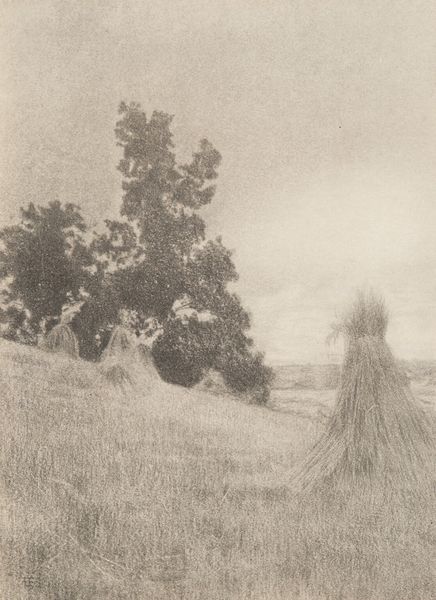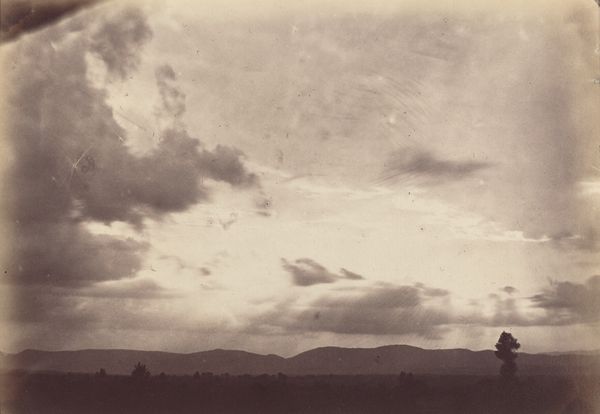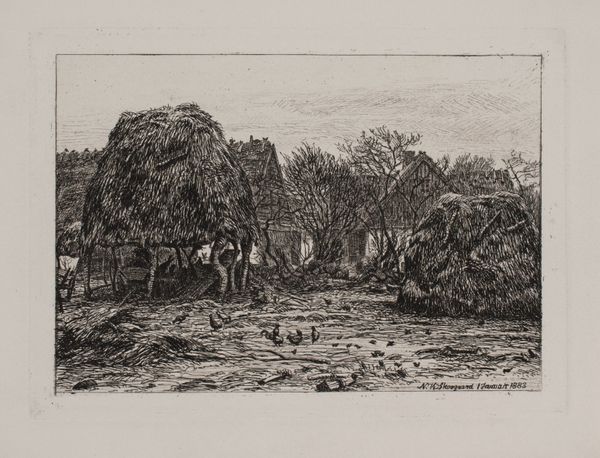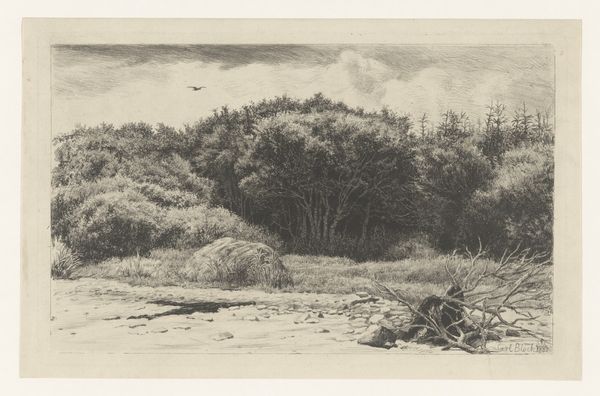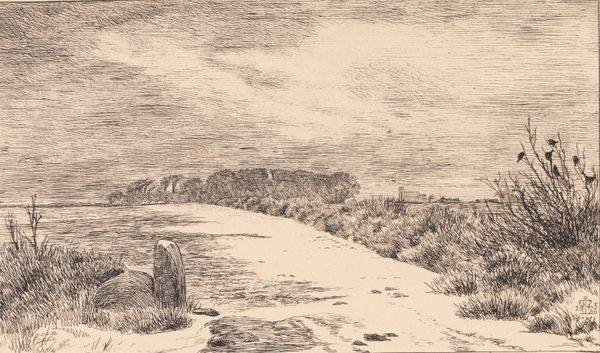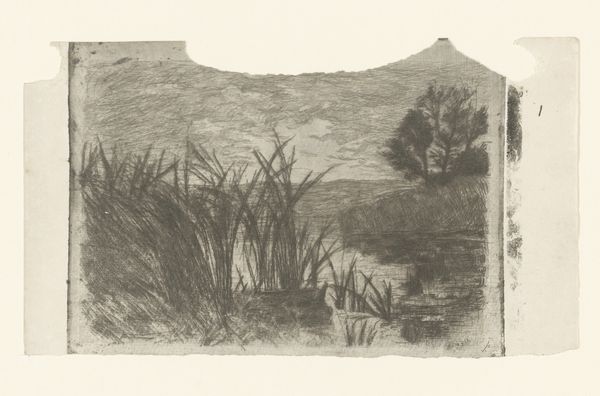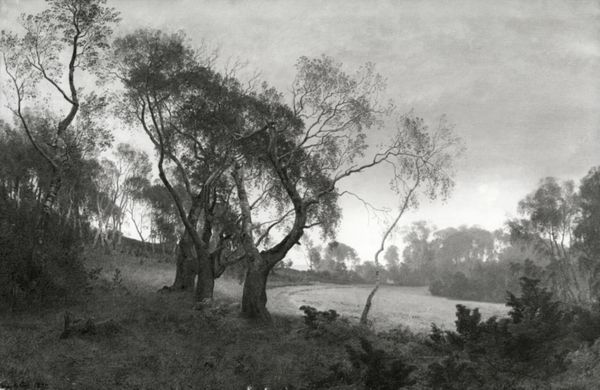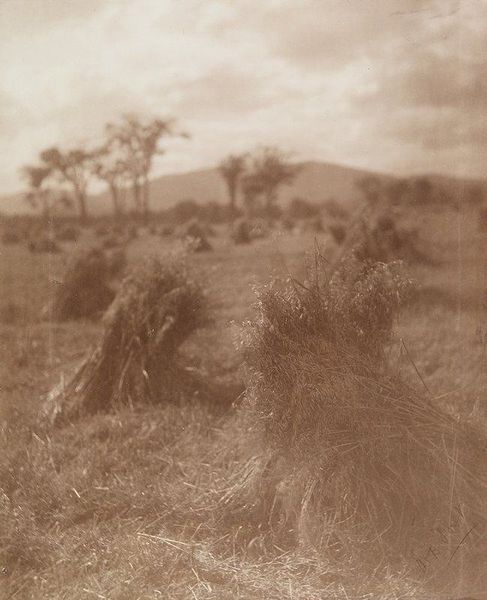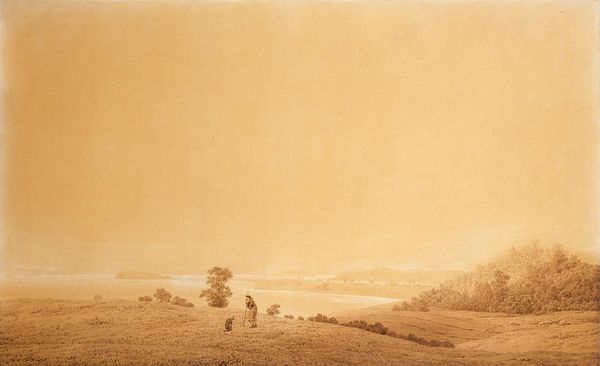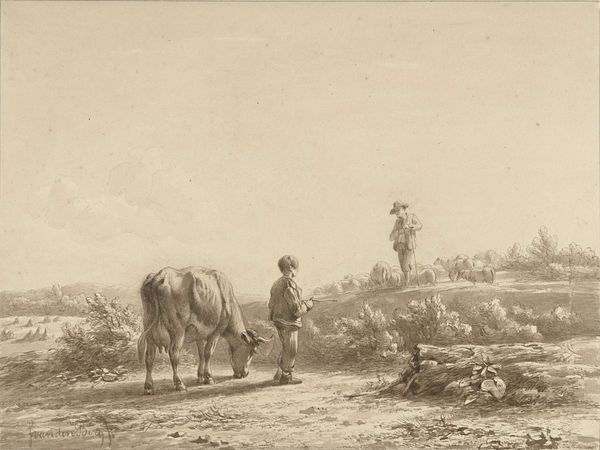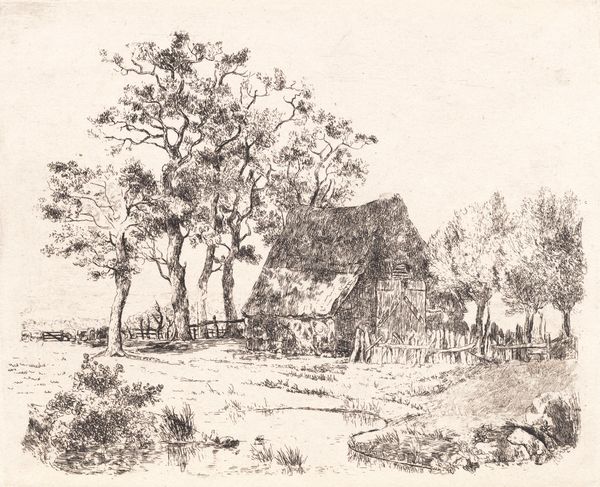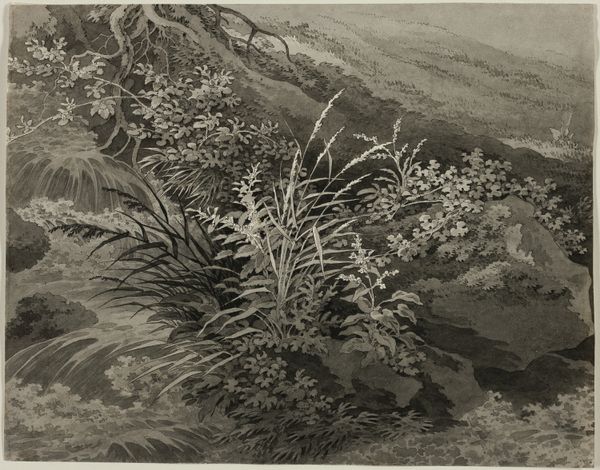
print, photography, gelatin-silver-print
#
black and white photography
# print
#
landscape
#
photography
#
gelatin-silver-print
#
monochrome photography
#
realism
#
monochrome
Dimensions: image: 12.5 x 15.9 cm (4 15/16 x 6 1/4 in.) sheet: 40.3 x 31.4 cm (15 7/8 x 12 3/8 in.)
Copyright: National Gallery of Art: CC0 1.0
Curator: Paul Strand’s photograph, Near Saltillo, likely created between 1932 and 1967, is a gelatin-silver print capturing a striking Mexican landscape. Editor: It feels almost biblical, doesn’t it? Stark, vast, full of enduring, defiant life. Curator: Strand was deeply interested in the spiritual and cultural significance of landscapes, especially in places like Mexico. His lens often focused on finding a timeless essence in his subjects. The prickly pear cactus in the foreground here have a certain, totemic power, like sentinels guarding the little white structure on the horizon. Editor: And that structure itself speaks volumes, doesn't it? Small against that wide sky, probably a humble dwelling or chapel. To me, it raises questions about land ownership and historical marginalization of the communities of northern Mexico during this period of post-revolution struggles for national definition. Was this area even then, and still, caught in a state of tension between traditional ways of life and modernity? Curator: Absolutely. You see the subtle variations in tonality that black and white photography provides. Strand manipulated tones, seeking a clarity of form that transcends mere representation, trying to find in it the symbol of human strength against the odds, or perseverance. What do you see symbolized in the Joshua trees themselves? Editor: Resistance and resilience. Look how they thrust against the heavy sky, living sculptures formed by harsh conditions. To me, this echoes the struggles of indigenous populations in Mexico post-revolution. And what about the sky—that roiling, unsettled quality adds a weight, implying social, cultural, and political struggles and transformation. Curator: This photograph acts as more than just an environmental record; it provides the possibility to contemplate what endurance and adaptation really mean to us as human beings living and depending on land and landscape. Editor: Right, images like these compel us to look beyond the picturesque and grapple with some complicated histories, legacies of colonization, economic disparities, and of course, the ecological implications of landscape transformations across time. Curator: In the end, the landscape and the cultures it sustains tell us complex histories that are worth learning from. Editor: A striking and poignant snapshot pregnant with many important discussions indeed!
Comments
No comments
Be the first to comment and join the conversation on the ultimate creative platform.
